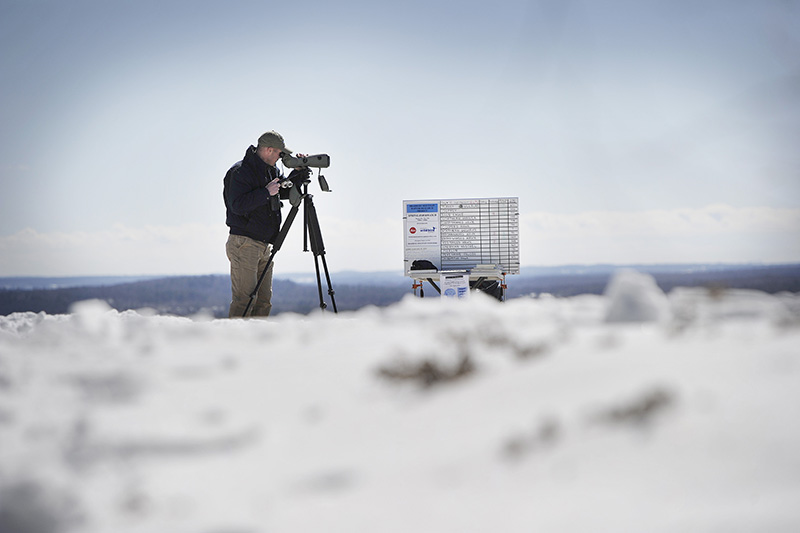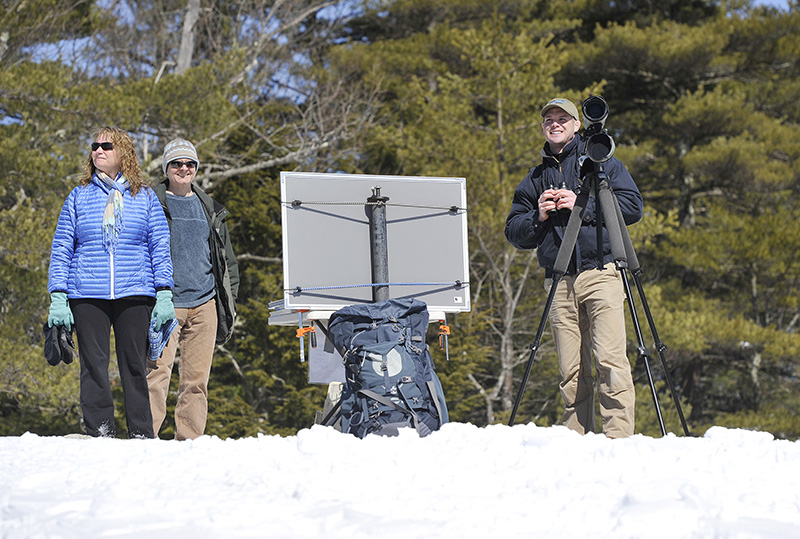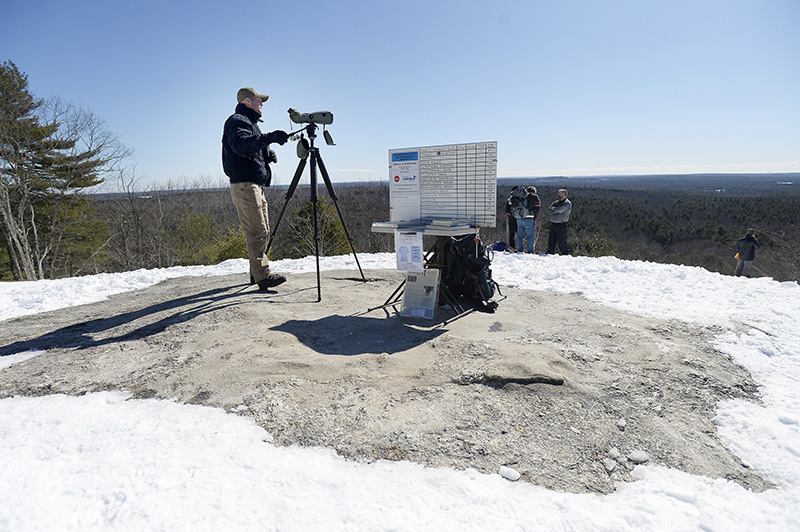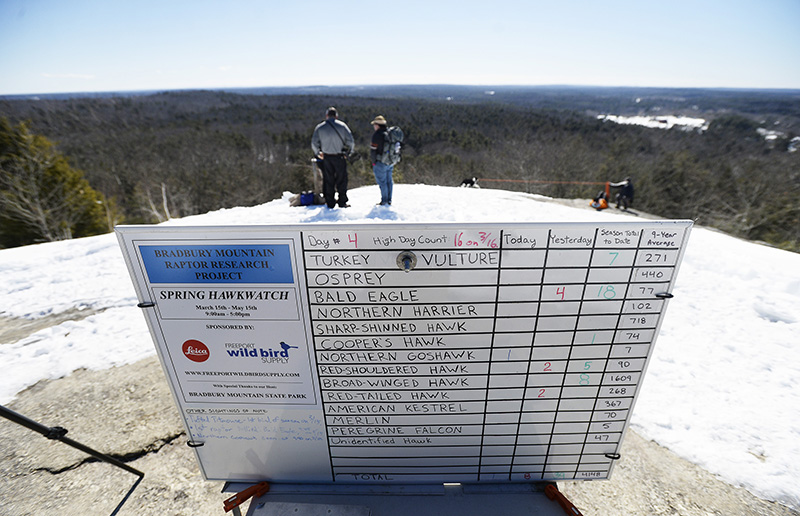POWNAL — For the next two months, Zane Baker will spend his days like he did on Saturday, scanning the horizon for migratory birds from the summit of Bradbury Mountain.
Baker is the official hawk counter for Spring Hawkwatch, a program that for the past decade has been counting the path of hawks and other migratory birds of prey to track their movements and populations.
“By the end of the day, there is a bit of eye fatigue,” said Baker, 32, who has perfect 20/20 vision. Baker has been volunteering on the hawk watch for four years, but this season is the first year he’s been named the official counter.
March is the beginning of migration season, so by early Saturday afternoon, after several hours of watching, Baker had spotted only one migratory bird, a Northern Goshawk, which tends to stay deep in the forests and so is relatively rare to see.
“They’re enigmatic, beautiful birds and fierce hunters. It’s a bird that carries off rabbits,” said Derek Lovitch, who co-owns Freeport Wild Bird Supply – which sponsors the hawk watch – with his wife, Jeannette. After this season, Lovitch will have a decade’s worth of data, which he will analyze and write a research paper on that he hopes will be accepted in a scholarly journal.
Baker, a carpenter from North Yarmouth, had all that he needed on a sunny, blue-skies day for eight hours of hawk watching – a spotting scope, binoculars, a marker board to write down his observations and a backpack full of supplies. Baker said some cloud cover helps in being able to see the birds.
The hawk-watching season – which lasts from March 15 to May 15 – on average results in spottings of more than 1,500 broad-winged hawks, 400 osprey and 75 bald eagles. The Northern Goshawk is only seen an average of seven times per season, Derek Lovitch said.
He said researchers are looking to see whether climate change is altering the movements of migratory birds. In the Northeast, bird watchers are seeing fewer American kestrels – a small falcon – and scientists are trying to find out why. Lovitch said it could be a loss of habitat, climate change or a combination of factors.
Baker said the American kestrel is one of his favorites.
“These birds are like the fighter jets of the bird world. They’re fun to watch,” Baker said.
He said he has to not only identify birds, but determine whether they’re migratory or local birds.
“It’s an inexact science,” Baker said. But there are some clues – the migratory birds tend not to linger while the birds that stay in Maine year-round have predictable flying patterns. Baker spotted a group of eagles on Saturday, but he was able to determine they were year-round and not migratory.
Sometimes, Baker said, the birds are miles away and he has to look for other clues to identify them. For instance, a turkey vulture has a distinctive way of flying.
“The turkey vultures are a good size and when they fly, their wings have a ‘V’ shape and they tip back and forth,” Baker said.
Baker said on some days in March, when it’s cold and there’s not many birds, it can be difficult.
“On cold, windy days in March, you must remain vigilant, and you have to force yourself to look up,” Baker said.
But in April, the weather warms and on some days one can see hundreds of migratory birds.
“Sometimes, they’re as thick as swarms of mosquitoes,” Baker said. “When mid-April rolls around, you forget all about March.”
Joe Lawlor can be contacted at 791-6376 or at:
jlawlor@pressherald.com
Twitter: joelawlorph
Send questions/comments to the editors.








Success. Please wait for the page to reload. If the page does not reload within 5 seconds, please refresh the page.
Enter your email and password to access comments.
Hi, to comment on stories you must . This profile is in addition to your subscription and website login.
Already have a commenting profile? .
Invalid username/password.
Please check your email to confirm and complete your registration.
Only subscribers are eligible to post comments. Please subscribe or login first for digital access. Here’s why.
Use the form below to reset your password. When you've submitted your account email, we will send an email with a reset code.